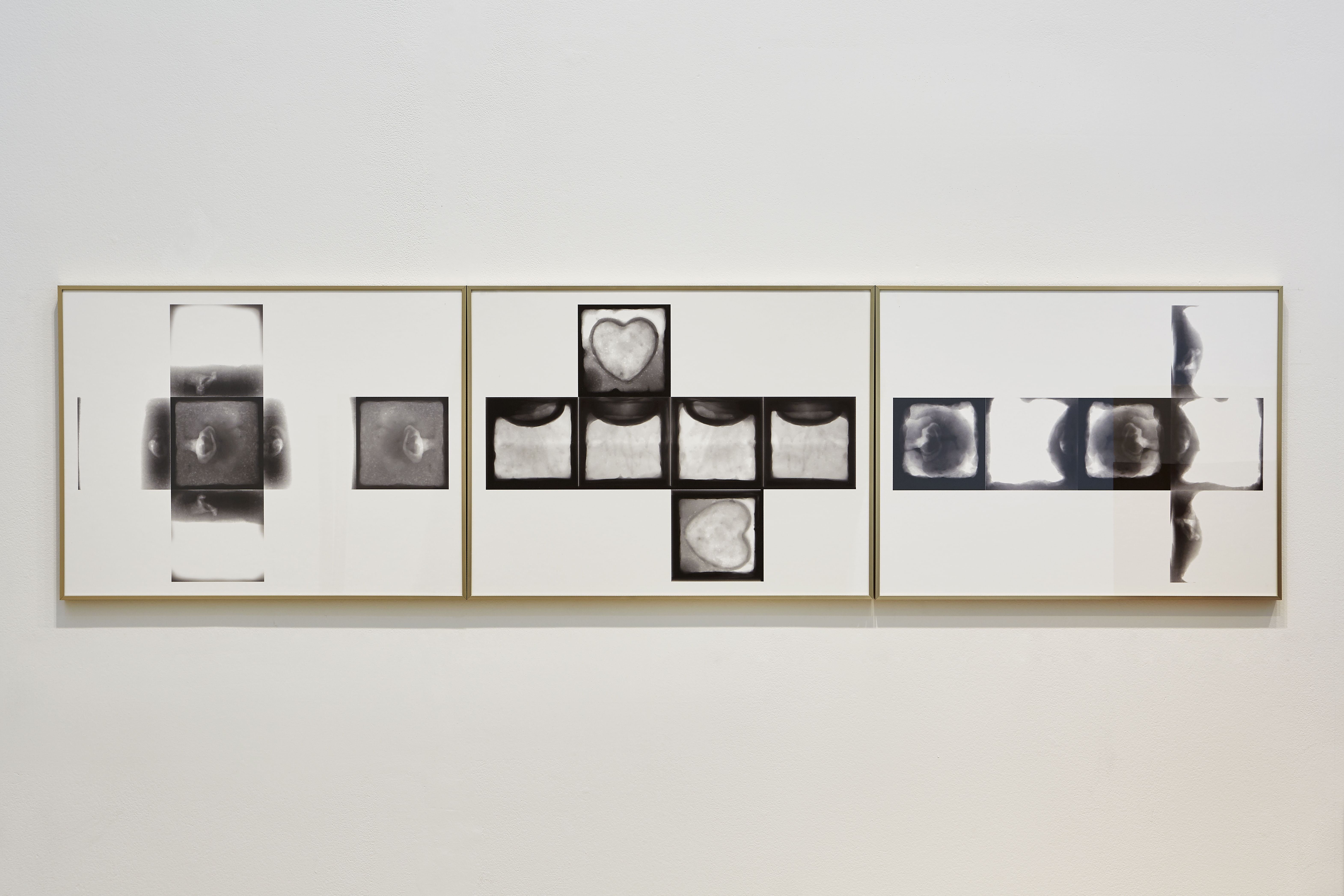Wooden Cube, approx.15cm in Side Length, Became a Plaster Cube in which Something’s Negatives are Hidden
2018
Sculpture: Plaster, Sapele wood
Photograph: Non-destructive inspection X-ray 149X149X14.9(cm) , 49X69(cm) X3
photograph: Swan Park


Wooden Cube, Approx.15cm in Side Length Became a Plaster Cube in Which Something’s Negatives are Hidden
Artist's Note
The notion of interiority in sculpture can be explored through mold making and casting, processes by which an artist can replicate the volume and shape of a three-dimensional object. Whereas these processes are great for reproducing texture of the surface in fine detail, they do not afford the artist the means to replicate the "inside" of the original object. While this aspect of mold making and casting may seem like a drawback, it also offers a new possibility for the artist to create a duplicate with an entirely new internal structure, different from that of the original object.
Wooden Cube consists of three plaster casts of a wooden cube. Inside each cast is an empty mold--in other words, a negative form--of my right ear, left ear, and a shape of heart, which were placed inside the mold of each cube before they were filled with plaster. Therefore, while the three plaster cubes seem identical from outside, each contains a different negative form inside.
The inside, however, is not the only portion that is visually inaccessible. In fact, any work of sculpture will always have one or more planes hidden from a given vantage point. For example, when looking at a cube, no one can look at all six faces simultaneously.
Accordingly, when showing work, an artist inevitably makes a decision as to which side of her work will remain visually inaccessible for the viewer.
Each of the three plaster cubes is placed on pedestals, roughly at eye level. Although the viewer is able to locate the bottom of each cube without having to kneel or bend over too much, they nonetheless remain hidden from their sight. As for the pedestals, to which the same sculptural concerns apply, it is their top plane that remains hidden. Accompanying these installations are the photos taken via non-destructive testing, which offer cross sections of the three plaster cubes. These are similar to X-ray images, albeit inverted, that offer the viewer a glimpse into the interior of the work.